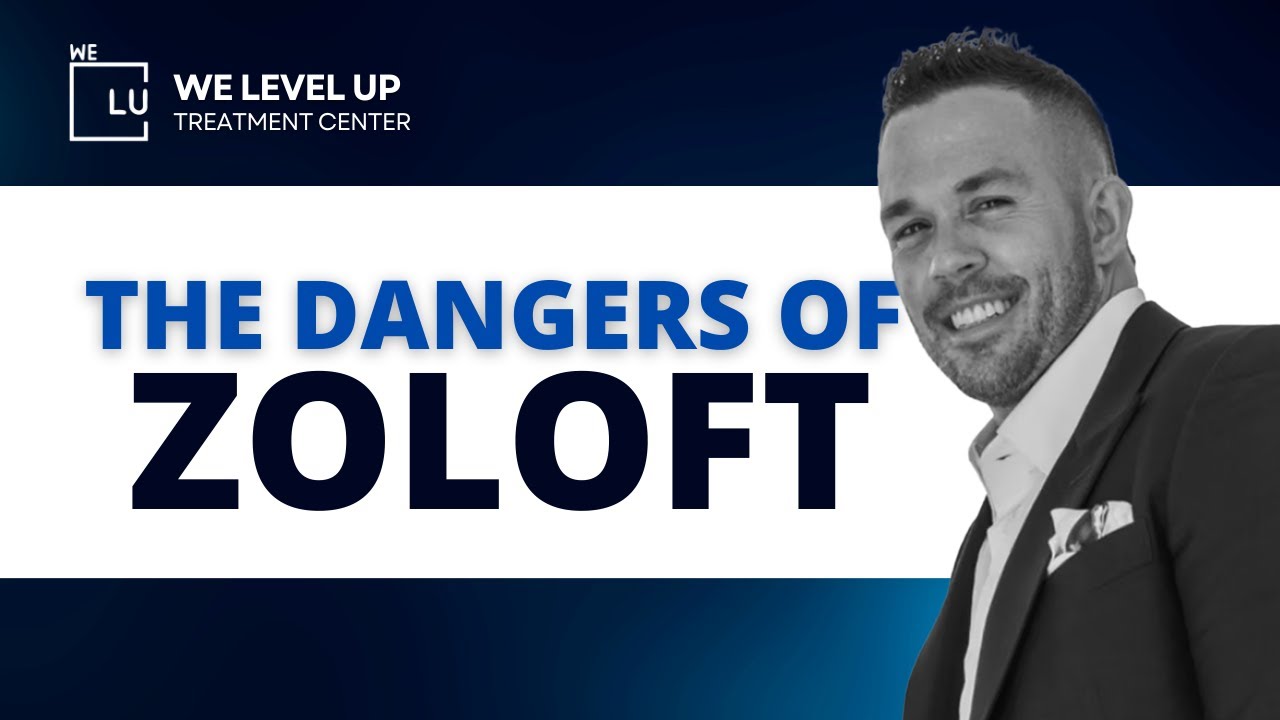Treatment strategies and the range of programs and services can differ among treatment centers, tailoring themselves to the unique health issues being addressed. Here at the We Level Up TX Treatment Center, we center our efforts on inpatient substance abuse treatment, thoughtfully intertwined with co-occurring dual-diagnosis mental health programs. Our comprehensive approach goes beyond simply tackling fundamental problems. Our approach tries to address both the root difficulties and the secondary disorders that are linked to them. The ultimate goal is to improve the long-term recovery results of individuals in our care.
There are standardized and well-followed criteria for determining what kind of treatment someone should undergo. The ASAM Level of Care system is an excellent way to find out and determine the intensity and type of treatment they should be placed in. Read on to find out more about Levels of Care for Addiction.
Get a free health assessment and find out what treatment options are most suitable for you. Call We Level Up TX Treatment Center to learn more.
The Five Levels of Care
Picture the American Society for Addiction Medicine’s (ASAM) five levels of care as a trusty roadmap, gently steering both patients and healthcare providers along the intricate treatment path. It’s like a reliable guidebook, providing direction and insights as we navigate the unique journey toward healing and recovery.
The levels of care are as follows:
Level 0.5 – Early Intervention
This is geared towards individuals teetering on the brink of developing substance use disorders or those in the initial phases of such challenges. To thwart the progression of substance use issues, the focus at this level revolves around imparting education, raising awareness, and implementing brief interventions.
Level 1 – Outpatient Services
In non-residential settings, outpatient services encompass individual or group counseling, therapy, and education. Tailored for individuals dealing with mild to moderate substance use disorders, this level is designed for those who don’t necessitate round-the-clock care.
Level 2 – Intensive Outpatient/Partial Hospitalization Services
This level involves more structured and intensive services than outpatient care. It is appropriate for individuals who require higher support but can still reside in their homes.
Level 3 – Residential/Inpatient Services
Residential or inpatient services involve 24-hour care in a controlled environment. This level is suitable for individuals with moderate to severe substance use disorders who require a highly structured and supportive setting.
Level 4 – Medically Managed Intensive Inpatient Services
At level four, 24-hour medically managed services are provided in an acute care setting, typically in a hospital. It is reserved for individuals with severe substance use disorders who require constant medical monitoring and supervision.

Skip To:
Learn More:
- What Is Inpatient Rehab?
- Inpatient Vs Outpatient
- What Is The Addiction Severity Index? How to Use ASI.
- How Much Does Rehab Cost With or Without Insurance?
- How Does Rehab Work FAQs, Treatment Programs, And Important Things To Know
- We Level Up Packing List | What to Bring to Rehab
- Rehab Insurance For Drug And Alcohol Addiction Treatment
Levels and Sub-levels of Care Chart
These levels of care also have sub-levels. Consult the table below to find out more about these sub-levels.
| Level | Name | Description |
|---|---|---|
| 0.5 | Early Intervention | Assessment and education for those at risk of substance use disorder. Includes programs like DUI classes for individuals arrested for driving under the influence. Intervention aims to prevent the development of a substance use disorder. |
| 1 | Outpatient Treatment Level 1 | Treatment for substance use, less than 9 hours a week. Suitable for individuals with less severe disorders or as a step-down from more intensive services. |
| 2.1 | Intensive Outpatient Services Level 2.1 | At least 9 and no more than 20 hours per week of treatment. Offers 24-hour medical care by phone or within 72 hours in person. |
| 2.5 | Partial Hospitalization Level 2.5 | Residential settings, such as a group home, require 5 hours per week of treatment. Focuses on topics like relapse management. |
| 3.1 | Clinically Managed Low-Intensity Residential | Residential setting, such as a group home, requiring 5 hours per week of treatment. Focuses on topics like relapse management. |
| 3.3 | Clinically Managed High-Intensity and Population-Specific | Targeted treatment at a slower pace for individuals with cognitive functioning issues, traumatic brain injuries, the elderly, or developmental disabilities. |
| 3.5 | Clinically Managed Residential Services | For individuals with serious psychological or social issues requiring 24-hour oversight and at risk of imminent harm. |
| 3.7 | Medically Managed High-Intensity Inpatient | For those needing intensive medical or psychological monitoring in a 24-hour setting but without daily physician interaction. |
| 4 | 24-Hour Nursing Care and Daily Physician Visits | For individuals needing continuous 24-hour oversight and daily physician monitoring. |
Get Help. Get Better. Get Your Life Back.
Searching for Accredited Drug and Alcohol Rehab Centers Near You? We Level Up Texas Is Opening Soon!
Even if you have failed previously and relapsed, or are in the middle of a difficult crisis, we stand ready to support you. Our trusted behavioral health specialists will not give up on you. When you feel ready or just want someone to speak to about therapy alternatives to change your life call us. Even if we cannot assist you, we will lead you to wherever you can get support. There is no obligation. Call our network hotline today.
FREE Addiction Hotline – Call 24/7
Why is the Level of Care Important?
The levels of care are structured to match the intensity and type of treatment with the unique needs of each individual. This is not a one-size-fits-all approach; it’s a tailored strategy that takes into account the severity of the substance use disorder, the presence of medical and psychological complications, and the person’s readiness for change.
From the early intervention phase to intensive inpatient services, each level addresses specific circumstances, ensuring that individuals receive the appropriate care at the right time. The significance lies in optimizing resources and maximizing the effectiveness of interventions. It’s about providing the necessary support without overwhelming or undertreating someone in need.
Opening Soon! First-Class Facilities & Amenities
World-Class High-Quality Addiction & Mental Health Rehabilitation Treatment
Coming Soon! Rehab Centers TourRenowned Addiction Centers. Serene Private Facilities. Inpatient Rehab Programs Vary.
FREE Addiction Hotline – Call 24/7Proven recovery success experience, backed by a Team with History of:
15+
Years of Unified Experience
100s
5-Star Reviews Across Our Centers
10K
Recovery Success Stories Across Our Network
- Low Patient to Therapist Ratio
- Onsite Medical Detox Center
- Comprehensive Dual-Diagnosis Treatment
- Complimentary Family & Alumni Programs
- Coaching, Recovery & Personal Development Events
What are the ASAM Criteria?
The American Society of Addiction Medicine (ASAM) was founded to bring addiction professionals, physicians, and other service providers under the same banner. It was formed by people who were passionate about improving the quality of addiction treatment and educating the medical community and the general public on the complicated nature of addiction. ASAM created the criteria enabling treatment specialists to efficiently assess individuals and determine the optimal therapy for each person during their journey.
These standards, the product of work that began in the 1980s, are the most thorough and commonly utilized criteria for determining treatment placement and patients’ transfer and dismissal from treatment programs. The ASAM criteria include a complete evaluation of the person seeking therapy, which involves an examination of their biological, emotional, and social requirements.
| Dimension | Description |
|---|---|
| 1. Acute Intoxication and Withdrawal Potential | Assesses the risk of acute intoxication and withdrawal, determining the need for medical supervision and intervention. |
| 2. Biomedical Conditions and Complications | Considers medical conditions and complications related to substance use, guiding the appropriate level of medical care. |
| 3. Emotional, Behavioral, or Cognitive Conditions and Complications | Evaluates mental health, emotional well-being, and cognitive functioning, providing insights into the need for psychiatric or psychological services. |
| 4. Readiness to Change | Assesses motivation and readiness to engage in treatment and change substance use behavior. |
| 5. Relapse, Continued Use, or Continued Problem Potential | Examines the likelihood of relapse or continued substance use problems, determining the level of treatment intensity. |
| 6. Recovery/Living Environment | Evaluates living situation and support system, considering factors that may impact the ability to maintain recovery. |
How is the ASAM Criterion Used?
The ASAM criteria analyze a person’s needs, strengths, resources, social support, and diverse assets using a multidimensional approach. The ASAM criteria assist in determining the best degree of care for the person’s substance use disorder at the time of assessment, taking into account the necessity for medical oversight and safety. The ASAM criteria can be applied at the beginning of therapy and throughout transitions to other levels of care along the continuum.
How Does The Continuum Of Care Work?
When evaluating substance use treatment centers, you’ll come across all these levels of care. The ASAM criteria are also helpful for commercial insurance providers and other stakeholders.
This is how the continuum of care works in theory. To begin, someone suffering from an opioid use disorder requires medically managed detox—the most significant level of treatment. A professional may move you from detox to a less intensive kind of treatment, such as inpatient therapy. Outpatient treatments may be used once inpatient treatment is completed. If a relapse occurs or the need for additional assistance emerges, moving to a higher level of care may be the next step. In such cases, it may be necessary to return to inpatient care.
We Level Up Treatment Center provides world-class care with round-the-clock medical professionals to help you cope. All work as a team to provide you with the optimum level of care throughout your treatment. Make this your opportunity to reclaim your life. Call today to speak with one of our treatment specialists. Our specialists know what you are going through and will answer any of your questions.
We Level Up Treatment Center Review
Start a New Life
Begin with a free call to an addiction & behavioral health treatment advisor. Learn more about our dual-diagnosis programs. The We Level Up treatment center network delivers recovery programs that vary by each treatment facility. Call to learn more.
- Personalized Care
- Caring Accountable Staff
- World-class Amenities
- Licensed & Accredited
- Renowned w/ 100s 5-Star Reviews
We’ll Call You
Search We Level Up Texas Level of Care and Resources
Sources
- ASAM (asam.org) “What are the ASAM Levels of Care?”
- ASAM (asam.org) ASAM 4th Edition – https://www.asam.org/asam-criteria/4th-edition-development
- Padwa H, Mark TL, Wondimu B. What’s in an “ASAM-based Assessment?” Variations in Assessment and Level of Care Determination in Systems Required to Use ASAM Patient Placement Criteria. J Addict Med. 2022 Jan-Feb 01;16(1):18-26. doi: 10.1097/ADM.0000000000000804. PMID: 33395145. https://pubmed.ncbi.nlm.nih.gov/33395145/
- Gastfriend DR, Mee-Lee D. Thirty Years of The ASAM Criteria: A Report Card. Psychiatr Clin North Am. 2022 Sep;45(3):593-609. doi: 10.1016/j.psc.2022.05.008. PMID: 36055741. https://pubmed.ncbi.nlm.nih.gov/36055741/ Read More level of care assessment, higher level of care, level of care chart, high level of care, highest level of care, hospital levels of care, levels of care mental health, mental health levels of care, addiction treatment levels of care, addiction level of care,
- Mark TL, Hinde JM, Barnosky A, Joshi V, Padwa H, Treiman K. Is implementation of ASAM-based addiction treatment assessments associated with improved 30-day retention and substance use? Drug Alcohol Depend. 2021 Sep 1;226:108868. doi: 10.1016/j.drugalcdep.2021.108868. Epub 2021 Jun 30. PMID: 34237614. https://pubmed.ncbi.nlm.nih.gov/34237614/
- Mark TL, Hinde J, Henretty K, Padwa H, Treiman K. How Patient Centered Are Addiction Treatment Intake Processes? J Addict Med. 2021 Apr 1;15(2):134-142. doi: 10.1097/ADM.0000000000000714. PMID: 32826618. https://pubmed.ncbi.nlm.nih.gov/32826618/
- Chuang E, Wells R, Alexander JA, Friedmann PD, Lee IH. Factors Associated With Use of ASAM Criteria and Service Provision in a National Sample of Outpatient Substance Abuse Treatment Units. J Addict Med. 2009 Sep;3(3):139-50. doi: 10.1097/ADM.0b013e31818ebb6f. PMID: 21769010; PMCID: PMC3584172. https://www.ncbi.nlm.nih.gov/pmc/articles/PMC3584172/
- Detoxification and Substance Abuse Treatment [Internet]. Rockville (MD): Substance Abuse and Mental Health Services Administration (US); 2006. (Treatment Improvement Protocol (TIP) Series, No. 45.) 2 Settings, Levels of Care, and Patient Placement. Available from: https://www.ncbi.nlm.nih.gov/sites/books/NBK64109/
- Substance Abuse Treatment: Addressing the Specific Needs of Women [Internet]. Rockville (MD): Substance Abuse and Mental Health Services Administration (US); 2009. (Treatment Improvement Protocol (TIP) Series, No. 51.) 5 Treatment Engagement, Placement, and Planning. Available from: https://www.ncbi.nlm.nih.gov/sites/books/NBK83238/
- Gastfriend DR, Rubin A, Sharon E, Turner WM, Anton RF, Donovan DM, Gorski T, Marlatt GA, Maisto S, Schultz TK, Shulman GD. New constructs and assessments for relapse and continued use potential in the ASAM Patient Placement Criteria. J Addict Dis. 2003;22 Suppl 1:95-111. doi: 10.1300/j069v22s01_07. PMID: 15991592. https://pubmed.ncbi.nlm.nih.gov/15991592/







